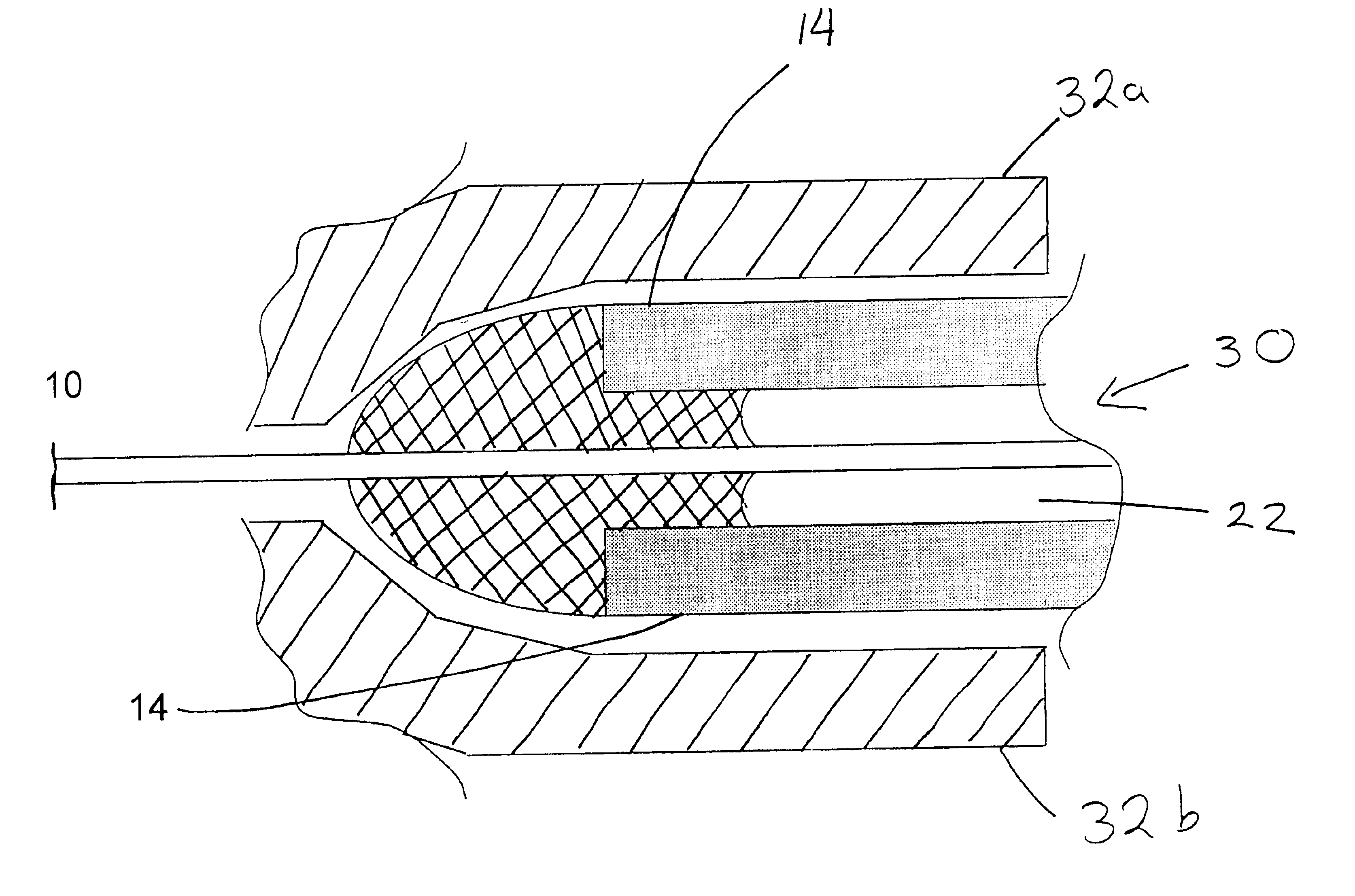Glass fiber fixative and fixing process
a technology of glass fibers and fixatives, applied in the direction of optical elements, manufacturing tools, instruments, etc., can solve the problems of reducing the strength of fibers, reducing the adhesion properties of optical fibers and non-glass materials, and consuming metallisation processes, so as to reduce the damage to nearby fiber coatings, and select the softening and melting points
- Summary
- Abstract
- Description
- Claims
- Application Information
AI Technical Summary
Benefits of technology
Problems solved by technology
Method used
Image
Examples
Embodiment Construction
[0057]There will now be described by way of example the best mode contemplated by the inventors for carrying out the invention. In the following description numerous specific details are set forth in order to provide a thorough understanding of the present invention. It will be apparent however, to one skilled in the art, that the present invention may be practiced without limitation to these specific details. In other instances, well known methods and structures have not been described in detail so as not to unnecessarily obscure the present invention.
[0058]Referring now to FIG. 2 of the accompanying drawings, a glass element, here an optical fiber 10 is bonded by a glass fixative bond 12 to a non-glass material element, here a hypo tube 14. The hypo tube 14 is comprises a non-glass material, for example Kovar, which is a nickel / iron alloy. In other embodiments of the invention other materials may be wish to be bonded to the optical fiber.
[0059]The hypo tube 14 is bonded to walls 1...
PUM
| Property | Measurement | Unit |
|---|---|---|
| Viscosity | aaaaa | aaaaa |
| Adhesion strength | aaaaa | aaaaa |
| Melting point | aaaaa | aaaaa |
Abstract
Description
Claims
Application Information
 Login to View More
Login to View More - R&D
- Intellectual Property
- Life Sciences
- Materials
- Tech Scout
- Unparalleled Data Quality
- Higher Quality Content
- 60% Fewer Hallucinations
Browse by: Latest US Patents, China's latest patents, Technical Efficacy Thesaurus, Application Domain, Technology Topic, Popular Technical Reports.
© 2025 PatSnap. All rights reserved.Legal|Privacy policy|Modern Slavery Act Transparency Statement|Sitemap|About US| Contact US: help@patsnap.com



